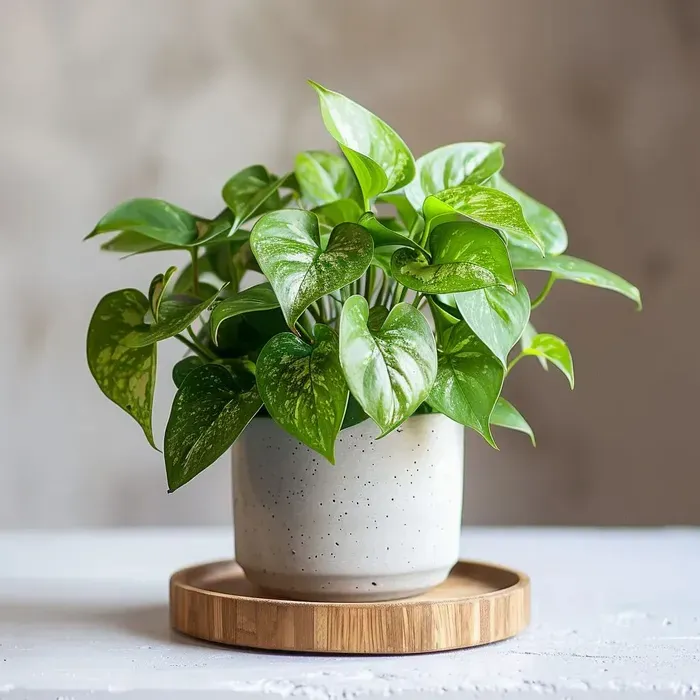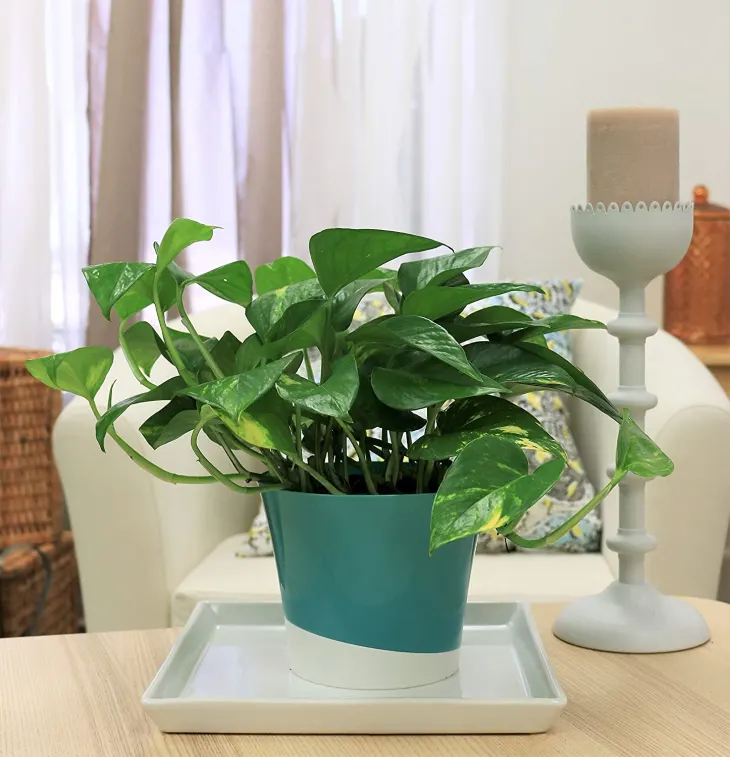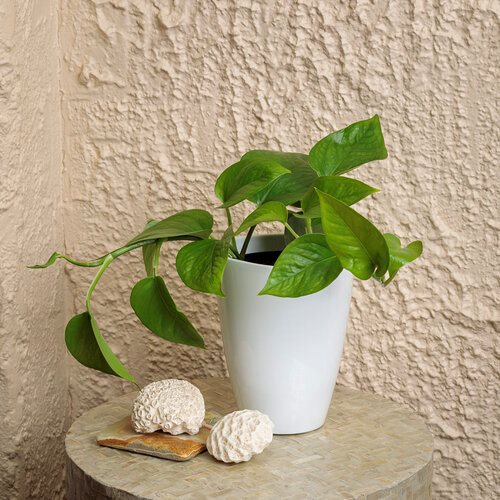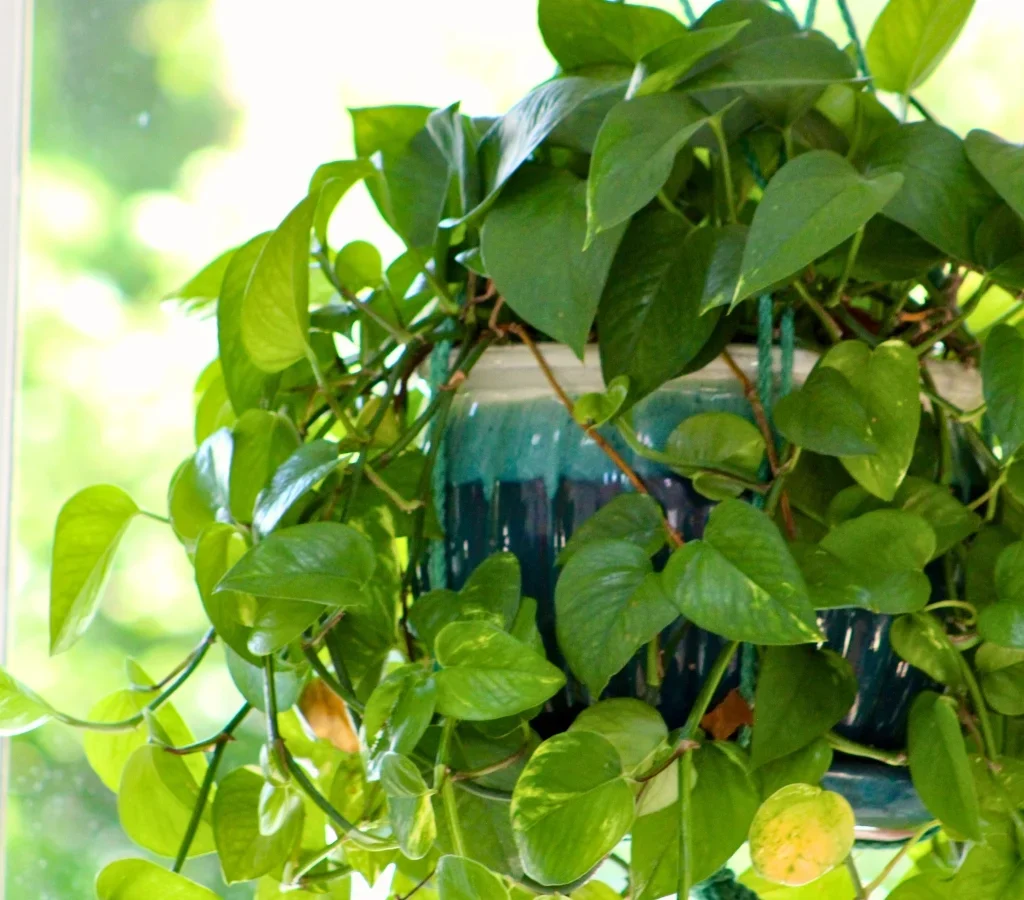Pothos (Epipremnum aureum), often nicknamed “devil’s ivy,” is one of the most beloved indoor plants worldwide. Known for its hardy nature, low maintenance needs, and beautiful trailing vines, pothos is the go-to choice for both beginner and seasoned plant lovers. Whether you’re aiming to drape it elegantly from hanging baskets, train it along bookshelves, or let it climb a moss pole, pothos can instantly transform your space into a lush green paradise.
But achieving that picture-perfect, fast-growing pothos doesn’t just happen by accident. With the right care, environment, and a few simple tricks, you can turn your plant into a cascading masterpiece. This article will guide you through everything you need to know about growing pothos quickly and keeping it thriving for years.
Why Pothos Is the Perfect Houseplant
Before diving into care tips, it’s worth knowing why pothos has earned its reputation:
- Resilient Nature – Pothos tolerates low light, irregular watering, and neglect better than most houseplants.
- Versatile Growth – It grows equally well in soil or water, giving you options depending on your style.
- Air Purifying – Studies show pothos helps remove toxins like formaldehyde, benzene, and carbon monoxide from the air.
- Beautiful Varieties – From the classic golden pothos with marbled yellow-green leaves to rare varieties like satin pothos or marble queen, there’s a style to suit every home.
Step 1: Choosing the Right Variety

Different pothos varieties grow at slightly different speeds and have unique appearances:
- Golden Pothos – Classic fast grower with bright green leaves streaked with yellow.
- Marble Queen – Slower-growing but stunning, with creamy white marbled leaves.
- Neon Pothos – Vibrant lime-green foliage that brings brightness to any space.
- Satin Pothos (Scindapsus pictus) – Silvery variegation on darker green leaves, a bit more delicate.
- Jade Pothos – Deep green foliage, great for lower-light spaces.
If speed and fullness are your goals, Golden Pothos and Neon Pothos are the best choices.
Step 2: Light – The Key to Fast Growth

Pothos can survive in low light, but if you want lush, fast growth, light is everything.
- Bright, indirect light is ideal. Place your pothos near an east- or north-facing window.
- Filtered sunlight through sheer curtains works beautifully.
- Avoid direct, harsh afternoon sun – it can scorch leaves.
- Artificial grow lights are excellent if you don’t have natural light.
Pro Tip: Variegated varieties need more light to maintain their leaf patterns. In too little light, they may revert to solid green.
Step 3: The Perfect Soil Mix
The right soil ensures good drainage and prevents root rot while giving the plant nutrients.
- Use a well-draining potting mix (houseplant or tropical mix works best).
- For a DIY mix: combine 2 parts peat moss or coco coir, 1 part perlite, and 1 part compost.
- A slightly acidic to neutral pH (6.1–6.8) is best.
If you prefer hydroponics, pothos can live happily in just water—but growth is usually faster in soil due to richer nutrients.
Step 4: Watering for Lush Growth
Overwatering is the #1 mistake with pothos care.
- Water when the top 1–2 inches of soil are dry.
- Stick your finger in the soil—if it feels dry, it’s time to water.
- Use room-temperature, filtered water for best results.
- In winter, reduce watering since growth slows down.
Yellowing leaves usually mean overwatering, while crispy edges suggest underwatering.
Step 5: Fertilizing for Fast Growth

To encourage speedy, lush growth, feed your pothos regularly:
- Use a balanced liquid houseplant fertilizer (10-10-10 or 20-20-20).
- Fertilize once a month during spring and summer when growth is most active.
- In fall and winter, cut back to once every 6–8 weeks or stop entirely.
For organic options, try worm castings or diluted compost tea.
Step 6: Training and Pruning
One secret to achieving a bushy pothos is regular pruning.
- Prune long vines just above a node (where leaves grow from the stem). This encourages side shoots.
- Propagate cuttings in water or soil to create new plants or fill out the base of the original pot.
- Use a moss pole or trellis to train pothos upward, which boosts leaf size.
Pruning not only controls shape but also helps channel energy into fuller growth.
Step 7: Propagation Tricks for Endless Greenery
Pothos is one of the easiest plants to propagate, giving you endless greenery:
- Cut a vine just below a leaf node.
- Place the cutting in a jar of water, ensuring at least one node is submerged.
- Change water every few days to prevent rot.
- Once roots are 2–3 inches long, transfer to soil.
This method allows you to keep refreshing your main plant and spread greenery throughout your home.
Step 8: Temperature and Humidity
Pothos thrives in the same conditions most people find comfortable.
- Temperature: 65–85°F (18–29°C). Avoid cold drafts below 50°F.
- Humidity: Average indoor humidity (40–60%) is fine, but higher humidity encourages faster growth.
- If your home is dry, use a humidifier or place a pebble tray under the pot.
Step 9: Pest and Problem Prevention

Pothos is hardy but not immune to issues.
- Pests: Watch for spider mites, mealybugs, or aphids. Wipe leaves with neem oil spray if infestations appear.
- Root rot: Always use well-draining soil and avoid overwatering.
- Yellowing leaves: Usually too much water or lack of nutrients.
Regularly wipe leaves with a damp cloth to keep them dust-free, helping them photosynthesize better.
Step 10: Styling and Display Ideas
Part of pothos perfection is showcasing it beautifully:
- Hang in macramé planters for cascading vines.
- Place on a bookshelf or cabinet for a jungle vibe.
- Train up a moss pole or trellis for a vertical statement.
- Combine multiple pothos varieties in one pot for color contrast.
Common Mistakes to Avoid

- Too little light – stunts growth and fades variegation.
- Overwatering – leads to root rot, the most common pothos killer.
- Tiny pots for too long – restrict root growth; repot every 1–2 years.
- Ignoring pruning – vines get leggy instead of bushy.
Conclusion
Pothos is more than just an easy houseplant—it’s a living piece of indoor art that rewards you with lush greenery when cared for properly. By giving it the right balance of light, soil, water, and nutrients—and adding a little pruning and training—you’ll unlock its full potential. With just a few simple adjustments, your pothos can go from a modest vine to a dramatic, cascading statement piece that transforms your home.
If you’re looking for a plant that’s forgiving yet rewarding, pothos is truly perfection. With these essential tips, you’ll have not only fast growth but also an endless supply of green beauty to brighten your indoor garden.





